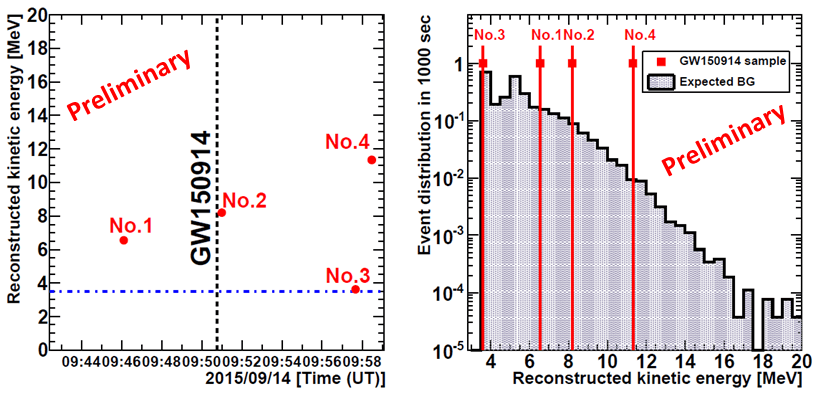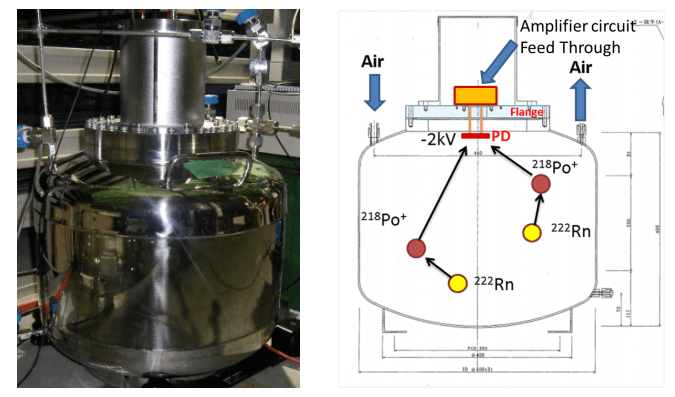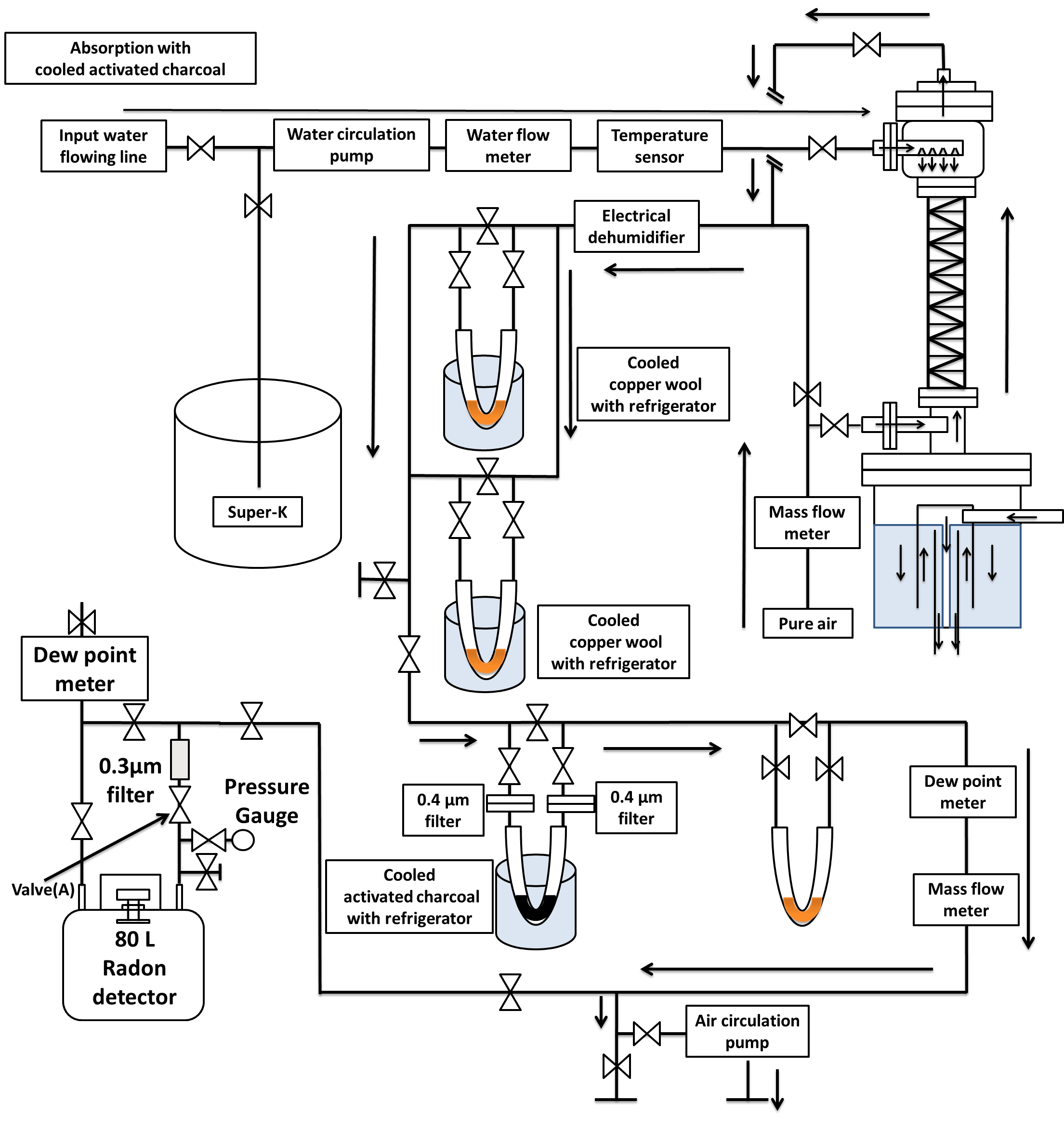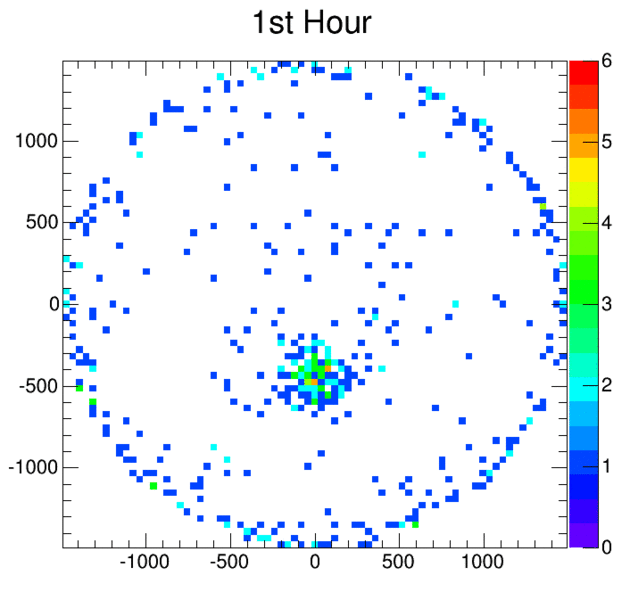 Super-Kamiokande
Super-Kamiokande

My main study is solar neutrino analysis using Super-Kamiokande detector.
In my Ph.D thesis, I evaluated the background event due to the radon daughters in low energy region (3.5-5.0 MeV (kin)).
In addition, I precisely determined the detection efficiency of low-energy-event using Ni-Cf calibration source.
Based on the studies above, I could extracted the solar neutrino events over the background in low energy region.
This imporovements enable the SK to precisely measure the recoil electron energy spectrum.
The right figure shows the yearly 8B solar neutrino flux measured by SK detector as well as the sunspot number on the surface of the Sun since 1996.
太陽自身のg-mode振動による周期的なニュートリノ放出強度変動に関する研究を通して、世界初のg-mode振動の発見を目指しています。
太陽に代表される恒星は、天体中心で生成される核融合起源の熱エネルギーが運動エネルギーに変換されることにより、天体自身の振動現象をおこします。太陽では重力によるg-mode振動によって、太陽核領域で局所的な密度(温度)変化が周期的(~200μHz)に生じていると考えられています。特に、Super-Kamiokande検出器で主に観測される8B(ボロン)ニュートリノの生成率は温度の18乗程度(最近だと24-25乗)に比例すると考えられているため、g-mode振動由来の局所的な温度変化により放出強度が周期的に変動していると予想されます。
Super-Kamiokande検出器で実際に観測された太陽ニュートリノ事象の時刻情報に周期的な変動があれば、g-mode振動を間接的に観測できる可能性があります。これらの研究における解析を担当しています。

Neutrino originated from astronomical phenomenon is interested in the field of neutrino physics. We (Super-Kamiokande collaboration) has searched neutrino associated with various astronomical events.
I was part of the analysis team of neutrino search associated with Gravitational wave. Figure shows the time distribution (left) and the energy distribution (right) of the observed events in Super-Kamiokande around GW150914 (Phys. Rev. Lett. 116, 061102 (2016)) detected by LIGO.
Since 2017, I have started the study of neutrinos from past solar flares.
BH-BH merger: Astrophys. J. Lett. 830, L11 (2016)
NS-NS merger: Astrophys. J. Lett. 857, L4 (2018)
Solar flares: Solar Physics 295, 133 (2020), arXiv: 2210.12948
Super-Kamiokande検出器のような地下実験では、高いエネルギーを持つ2次宇宙線(ミューオン)を観測することができます。 これらの宇宙線ミューオンの到来数が周期的に変動しているかを研究しています。
特に、大気中の密度や太陽活動との相関に関して研究を進めています。


